Cardiff pond maintenance, Carlsbad pond maintenance, Carmel Valley pond maintenance, Del Mar pond maintenance, Encinitas pond maintenance, La Costa pond maintenance, LaJolla pond maintenance, Leucadia pond maintenance, North County pond maintenance, Point Loma pond maintenance, Poway pond maintenance, Rancho Santa Fe pond maintenance, San Diego pond maintenance, and San Marcos pond Maintenance. North County Ponds and Rancho Santa Fe pond service. North County Ponds 760-710-1632 P.O. Box 8053 Rancho Santa Fe, California 92067. North County Ponds is north San Diego's best pond cleaning and pond maintenance service pond cleaning service. For a clean, healthy, beautiful pond, our pond maintenance is second to none. We are pond service professionals and are passionate about clean, healthy koi ponds. Let North County Ponds care for your koi pond. Keep your pond beautiful! Call us today for a free pond consultation: North County Ponds (760-710-1632) Dirty pond? North County Ponds is the answer for clearer, cleaner pond water, pond muck removal, aquatic plant management, pond algae control, pond filter and pond pump maintenance, pond equipment installation, koi health, pond health, and general pond and lake management. North County Ponds services the greater area of north San Diego county including: Rancho Santa Fe ponds, Del Mar ponds, La Jolla ponds, Carmel Valley ponds, Solana Beach ponds, Encinitas ponds, Carlsbad ponds, and Fallbrook ponds. |
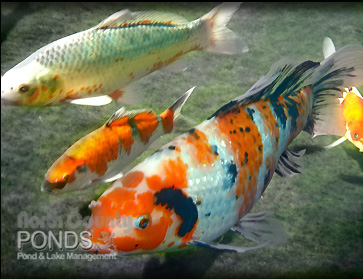 |
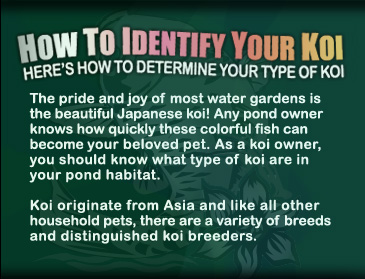 |
 |
|
|
 |
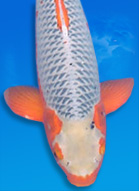 |
 |
| Asagi are fully scaled, nonmetallic fish with a long history. Some pond owners see them as unrefined, dull, and not proper koi at all. Certainly they are an acquired taste, far removed from the brilliantly tri colored modern Showa or the flashy koi grouped in Hikariutsuri. But their quiet elegance serves as a counterpart to their more exotic pond mates and they also have the potential to grow very large. Probably the most common of the Japanese koi. Ideally, the back of an Asagi should be evenly covered in scales that are pale blue at the spot where they enter the skin, but are a darker blue as they grow out. The sharper the definition between these two shades, the more impressive the koi will look. |
 |
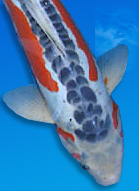 |
 |
| Shusui means “autumn water” in Japanese. At first sight, these mirror-scaled koi seem to have little in common with Asagi, but Shusui are actually the product of crossing Asagi with a German mirror carp in 1910 by Yoshigoro Akiyama, resulting in the very first Doitsu scaled koi breed. The color distribution is essentially the same as in the Asagi, but because there are no normal scales to give an overall reticulated effect, the smooth, sky-blue back is instead highlighted by the Doitsu scalation. In good examples, these armored scales form a regular pattern on the shoulders of the koi and then run in two lines on either side of the dorsal fin, returning to a single line towards the tail. |
 |
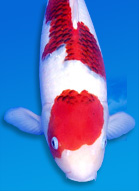 |
 |
| This is a white koi with the hi pattern similar to Kohaku, but each red scale is edged in black or dark blue, reminiscent of their Asagi ancestry. Good Ai Goromo are judged much like good Kohaku, with all the qualities expected of that variety: snow-white skin, deep crimson hi, and an interesting traditional or modern pattern. The dark lining along the scales appears only faintly when the koi is young and may take years to come out fully. Too much sumi early in life is an indication that this color will eventually overwhelm the koi. But in mature koi, the sumi should be evenly distributed over all patches of hi, with the exception of the head. |
 |
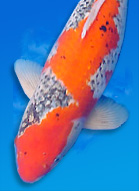 |
 |
| This is probably the most diverse koi variety known. Goshiki, meaning "five colored" in Japanese, are said to be five-colored koi, although sometimes you'd be hard pressed to pick out the red, black, white, light blue, and dark blue color tones that are said to be available. Even further, a sixth color - purple - is formed when black and blue overlay one another. Goshiki have strong Asagi lineage, which lends a reticulation to some or all of the scales. Gin-Rin Goshiki and Doitsu Goshiki add even more complexity to an already fathomless variety. |
 |
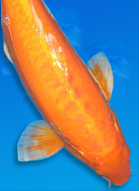 |
 |
| Kawarimono is a broad classification used for a wide variety of non metallic koi that don't fit into other classes. Some examples are breeds of their own, while others display "one-of-a-kind" color and patterning. Furthermore, certain koi are placed in Kawarimono because they deviate so much from the judging criteria applied to what would typically be their own variety. For instance, the Kanoko Kohaku, which displays a dappled hi pattern, is benched Kawarimono because it would never be able to compete with conventionally marked Kohaku. |
|
|
|
 |
| If your pond is new or old, large or small, North County Ponds is trained in a variety of pond care services including regular pond maintenance, on-call pond services, pond clean-outs, complete filter system installs, pond water treatments, system cleanings, pond sealing, koi medicating, koi and fish care, algae control, aquatic plant care, and all other aspects of pond and lake management. Call North County Ponds at 760-710-1632 for questions, pricing info, or to schedule a free pond consultation. |
 |
|
| Cardiff pond maintenance, Carlsbad pond maintenance, Carmel Valley pond maintenance, Del Mar pond maintenance, Encinitas pond maintenance, La Costa pond maintenance, LaJolla pond maintenance, Leucadia pond maintenance, North County pond maintenance, Point Loma pond maintenance, Poway pond maintenance, Rancho Santa Fe pond maintenance, San Diego pond maintenance, and San Marcos pond Maintenance. North County Ponds and Rancho Santa Fe pond service. North County Ponds 760-710-1632 P.O. Box 8053 Rancho Santa Fe, California 92067. North County Ponds is north San Diego's best pond cleaning and pond maintenance service pond cleaning service. For a clean, healthy, beautiful pond, our pond maintenance is second to none. We are pond service professionals and are passionate about clean, healthy koi ponds. Let North County Ponds care for your koi pond. Keep your pond beautiful! Call us today for a free pond consultation: North County Ponds (760-710-1632) Dirty pond? North County Ponds is the answer for clearer, cleaner pond water, pond muck removal, aquatic plant management, pond algae control, pond filter and pond pump maintenance, pond equipment installation, koi health, pond health, and general pond and lake management. North County Ponds services the greater area of north San Diego county including: Rancho Santa Fe ponds, Del Mar ponds, La Jolla ponds, Carmel Valley ponds, Solana Beach ponds, Encinitas ponds, Carlsbad ponds, and Fallbrook ponds. |








